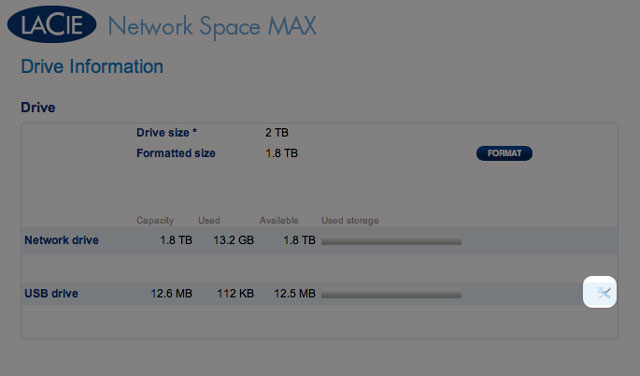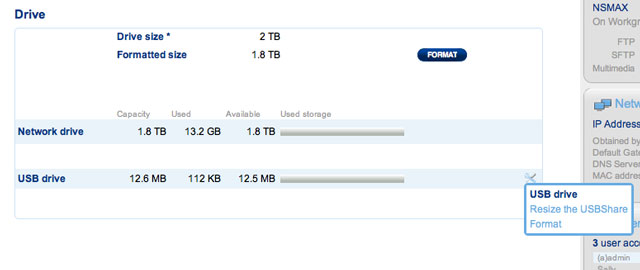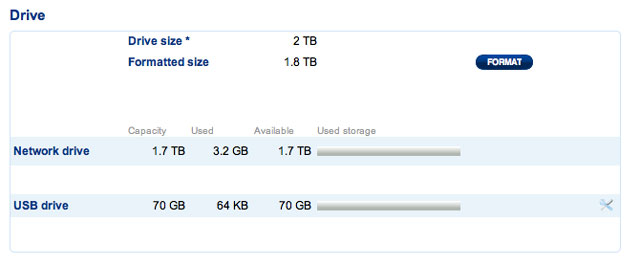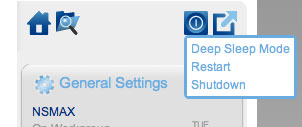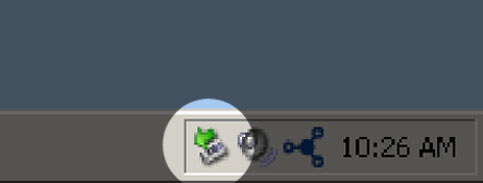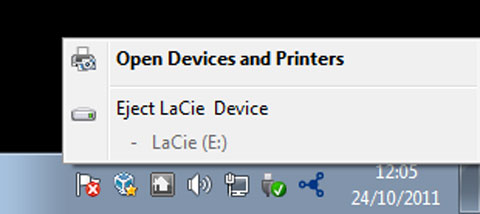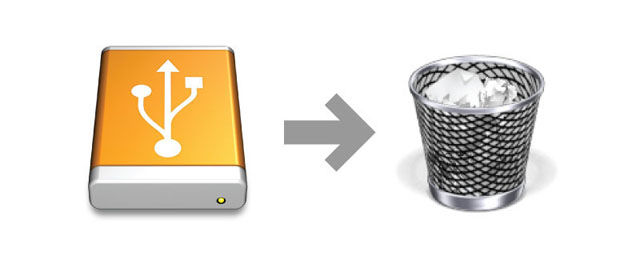User Tools
Site Tools
Table of Contents
Connect to a Computer via USB
This chapter explains how to connect your LaCie network storage to a computer via USB. For details on connecting the device to a network, see Connect to the Network.
If your network is limited to 10/100 megabit transfer speeds or if you use Wi-Fi, the USB connection will generally permit faster transfer rates. In such cases, LaCie suggests that you copy large quantities of files from your computer to your LaCie network storage via USB. Please note that your network storage device should not be connected to the network while it is attached to a computer via USB.
Connection Steps
- Before attempting to create the USBShare, you must successfully complete the brief Setup Wizard for the Dashboard. The wizard will appear the first time you connect the device to the network and log into the Dashboard via your web browser (see Connect to the Network and Administration (Dashboard)).
- By default, USBShare has 0GB of storage. Before connecting the device to your computer via USB, please allocate storage to USBShare:
- While the network storage is still connected to the network, access Dashboard - Drive Information.
- Click the Apply button.
- Once the blue LED has shut off, disconnect the device's Ethernet cable from the network.
- Connect the included USB cable to the rear device port and to your computer. DO NOT use the front USB expansion port.
- Turn on the network storage using the power switch on the rear of the product. The LED will begin blinking.
- USBShare will mount on your computer. Copy and paste or drag and drop files to the USBShare.
Disconnecting the USB Device
Disconnect the USB Connection
USB, FireWire, eSATA, and Thunderbolt external devices feature “plug & play” connectivity, which means that your drive can be connected and disconnected while the computer is running. To prevent failures, however, it is important to follow these steps when disconnecting your LaCie hard disk.
Windows XP Users
From the System Tray (located in the lower right-hand side of your screen), click the Eject icon (a small green arrow over a hardware image). A message will appear, listing the devices the Eject icon controls (it should say, “Safely remove…”). Click on the LaCie hard disk in this prompt.
This message will appear: “Safe to Remove Hardware” (or similar). It is now safe to disconnect the device.
Windows Vista & Windows 7 Users
From the System Tray (located in the lower right-hand side of your screen) click on the plug icon (note the white check mark inside a green circle).
A message will appear, detailing the devices that may be safely unmounted.
Select Eject for the device you wish to unmount. A message will appear notifying you that it is safe to remove the device.

 Print page
Print page Save page as PDF
Save page as PDF


